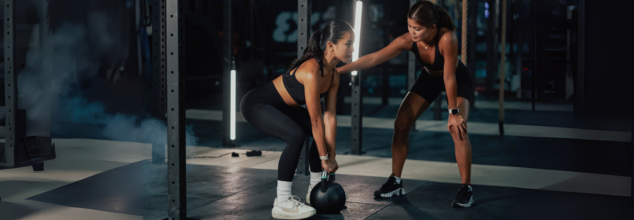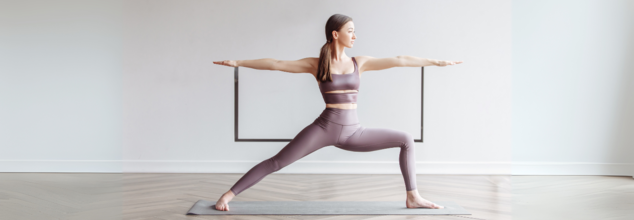- Health Conditions A-Z
- Health & Wellness
- Nutrition
- Fitness
- Health News
- Ayurveda
- Videos
- Medicine A-Z
- Parenting
- Web Stories
From Walking 25000 Steps Daily To 7300 Kms In A Year, Meet The Man Who Walked His Fitness Back Into His 20s

What if the road to reclaiming your health, sanity, and strength didn’t begin at a gym, but with a single step—on a sidewalk, at dawn, with no plan in sight? That’s exactly how Rohit Sakunia’s journey began. No personal trainer. No fancy gear. Just the resolve to put one foot in front of the other.
From feeling stuck and overwhelmed to walking over 7,300 kilometers in a single year—Rohit’s story isn’t just about physical transformation. It’s about how movement became his medicine, walking became his therapy, and discipline became his greatest motivation. If you’ve ever felt lost and unsure where to start, this real-life story might be the push you need to simply start walking your way back to yourself.
When 39-year-old Rohit Sakunia, founder of ARTE Media, began walking, it wasn’t with the intention of rewriting his health story. There were no fancy trackers, no grand fitness plans, and no public proclamations. Just a quiet, deeply personal decision to move—both physically and emotionally—through a difficult chapter of life. What started as a way to cope with a personal setback became a transformation that saw him walk more than 7,300 kilometers in a single year—a distance equal to walking from New Delhi to Reykjavik, Iceland.
This is not just a story of endurance. It’s about discipline, emotional resilience, and redefining what fitness really means when you're nearly 40 and striving to reclaim your twenties.
Rohit's journey began in late 2018 following a deeply personal and destabilizing event. With no history in fitness or athletic discipline, and a lifestyle far from ideal—loose clothes to hide weight gain, impulsive eating, and emotional disconnection—he found himself spiraling. "I wasn’t a drinker, so alcohol wasn’t an option. But I was anxious, depressed, and had no idea how to move forward," he says.
In that haze, walking emerged not as a fitness resolution but as a coping mechanism. “I needed to feel like I had some control over my life. Walking just a few minutes a day gave me that.” What started with 3,000 steps grew steadily into 10,000 and beyond. Despite criticism—“You’re just chasing a number from some Japanese marketing campaign”—Rohit stayed the course. “So what if I was? I wasn’t hurting anyone.”
Walking as Therapy, Not a Trend
By 2023, what began as a simple daily routine became a full-fledged commitment. Rohit clocked in 20 kilometers every single day, rain or shine, sometimes even more. “Some days it was 25, others 30. Shimla was particularly intense; I had time, space, and nature—and that fueled me.”
Yet, the transformation wasn’t just in kilometers or calories burned. “It wasn’t about fitness at the start. It was survival. Solitude. Sanity. Just me, my thoughts, and the road,” he reflects. Rohit explains how the rhythm of walking gave him something he hadn’t found in years: clarity.
“The emotional and mental shifts were profound. Every morning, I’d spend two hours with myself. No phone buzzing, no meetings, just fresh air and honesty. It helped me process grief, fear, self-doubt—all the things I didn’t even realize I had buried.”
By the end of 2023, Rohit had covered a staggering 7,300 kilometers on foot—an achievement few can claim. But the journey didn’t stop there. “As empowering as it was, I realized I needed more than just endurance. I needed strength.”
Now, he maintains a consistent 12-kilometer walking routine daily and has added strength training to his fitness regimen. “I’m no longer chasing step counts. I’m chasing growth. Peace. Power. Discipline.”
This shift in mindset—from metrics to meaning—marks the real milestone. “It’s not about proving anything to the world. It’s about honoring a promise I made to myself: to not quit when I had every reason to.”
No fitness transformation is complete without dietary changes, and Rohit’s case is no exception. His diet today focuses on clean eating: generous servings of green vegetables, lean proteins, and healthy fats. He follows intermittent fasting and drinks around 3.5 liters of water daily.
“I don’t believe in extreme restrictions. It’s about consistency and balance. I make sure my meals are aligned with my fitness needs—enough protein, carbs, and hydration. The goal is to feel nourished, not punished.”
Micro Habits, Major Discipline
Rohit’s routine is a masterclass in how small habits can create massive change. From walking during meetings to taking stairs instead of elevators and logging 6,000–8,000 steps after dinner, he’s woven movement into his everyday schedule.
“It’s not about finding time. It’s about making time—even when your day is packed. That’s where discipline > motivation.”
He also emphasizes how fitness became his non-negotiable: “Work can wait. Emails can wait. But showing up for yourself? That’s a priority.”
Now in a phase of maintenance and evolution, Rohit’s goals have evolved. “I’m building a lifestyle, not chasing a finish line. I want to see what my best self looks like—just once. And I want to do that with intention, not obsession.”
For anyone starting out, his advice is straightforward: “You don’t need fancy plans. Just start walking. You don’t even need motivation—just a reason. And once you begin, honor that commitment with everything you’ve got.”
And sometimes, the most radical thing you can do for your health is something as simple, and as transformative, as putting one foot in front of the other.
Unsure About Strength Training? Fitness Experts Share Methods That Might Fit You Best

Credits: Canva
If you're curious about building strength but don't know where to start, you're among the millions looking for the right exercise that suits their body and helps build strength. Strength training is not only for athletes or gym rats; it's a wonderfully versatile type of exercise that can accommodate all ages, fitness levels, and objectives. From wanting to add muscle mass, strengthen bones, alleviate stress, or simply haul groceries without aggravating back pain, strength training can assist—and it doesn't need to be convoluted.
Strength training isn't solely for gym rats or bodybuilders—it's a science-proven type of exercise that works for almost every system in the human body. The CDC states that adults need to do muscle-strengthening exercises at least two times per week to enhance health and lower the risk for chronic disease. Studies by the American Heart Association indicate that regular strength training enhances cardiovascular health, promotes healthy blood pressure, and helps regulate blood sugar. In addition to physical improvements, strength training has also been tied to improved mental health, mind function, and overall quality of life. Discover a approach that suits your lifestyle, fitness level, and goals.
Free Weights
Free weights such as dumbbells, barbells, kettlebells, and medicine balls provide unparalleled versatility. They more accurately reproduce daily movements than equipment and involve the use of multiple muscle groups, including stabilizers, to enhance balance and coordination.
They provide a natural range of motion and can be modified for every level of skill. Newbies can begin with light weights and progress slowly. It's all about learning proper form. For beginners, it's best to take advice from a certified trainer or coach to prevent injury and gain confidence.
Weight Machines
Weight machines are a great entry point if you’re new to strength training or recovering from an injury. These machines guide your movements, offering a fixed range of motion that lowers the risk of doing an exercise incorrectly.
They enable you to target individual groups of muscles and are less scary than free weights. They also facilitate easier resistance control, which is perfect for individuals starting to build their strength.
Resistance Bands
If you are an avid traveler or like to work out at home, resistance tubes or bands are a budget-friendly and space-saving option. There are different tensions for these elastic bands, and they can be utilized to work virtually every part of the body.
From leg presses to shoulder rotations, bands are ideal for enhancing flexibility, balance, and tone. They're also less prone to injury, so they're perfect for seniors or anyone just getting into fitness.
Bodyweight Exercises
Pushups, squats, lunges, planks, and pullups are all included. Bodyweight exercises are highly effective and don't need much to no equipment, making them one of the easiest forms of strength training.
They depend on the resistance of your body to provide functional strength directly usable in daily life. They are simple to modify to make them more or less intense based on your skill level.
Why Strength Training Is Necessary?
Strength training's advantages extend way beyond adding bulk:
Muscle Retention: As we get older, we naturally lose muscle. Strength training will keep it intact, keeping us strong and mobile longer.
Bone Health: Weight lifting increases bone density and decreases the risk of osteoporosis.
Joint Support: It aids in the management of arthritis by enhancing joint function and decreasing pain.
Heart Health: Strength training on a regular basis can decrease blood pressure and enhance cholesterol.
Weight Management: It aids in maintaining lean muscle mass during weight loss and enhancing body composition.
Daily Functionality: From carrying groceries to walking upstairs, strength training makes daily activities easier.
Mental Health: Strength training can decrease anxiety, enhance mood, and increase self-esteem.
Cognitive Function: New studies connect frequent resistance training with improved memory and more acute thinking ability.
Begin with what makes you feel comfortable, and take it from there. You don't necessarily have to lift weights or get a gym membership immediately. Proper form and consistency are the most important things. Two to three strength training sessions a week are what experts suggest, allowing your muscles to rest in between.
Don't be shy to switch it up. Use equipment at the gym, have dumbbells at home, bring resistance bands on the road, and squeeze in some bodyweight circuits when there isn't time for more.
Strength training is not a cookie-cutter plan. What's important is selecting a strategy (or combination of strategies) that suits your lifestyle, style, and objectives. With the proper strategy, you can gain strength that benefits every aspect of your life—improved health to a more solid head.
Irrespective of how old you are or how fit you are, it's an excellent time to begin. Your body—and mind—will be grateful.
UK-based Reporter Tried The One Exercise Loved By Meghan Markle, Kardashians, And Hailey Bieber - Here's How It Went For Her

Credits: Wikimedia Commons and Instagram
Lagree Pilates has fast become the go-to workout for Hollywood A-listers, drawing the likes of Meghan Markle, Kim and Khloe Kardashian, and Hailey Bieber. Touted as a game-changer in strength and endurance training, Lagree combines elements of traditional Pilates with high-intensity, low-impact resistance exercises. Unlike the more familiar Reformer bed used in standard Pilates, Lagree is performed on a Megaformer—a machine specifically designed to target core strength, muscular endurance, balance, and flexibility all at once.
While the Megaformer has yet to become mainstream across all UK cities, Re:Sculpt studios in Manchester’s Ancoats and Salford offer a close alternative: the Maxformer, reports the Express UK. These machines mimic the design and intensity of Lagree’s original equipment, and their popularity is catching on quickly among fitness enthusiasts.
The Workout: More Sweat, Less Impact
Lagree Pilates sets itself apart by fusing strength training with cardio and balance-focused movements in a continuous flow, meaning minimal rest and maximum burn. It's often described as the “next level” of Pilates—great for building lean muscle, especially in the core, with little strain on joints. This makes it appealing not just for aesthetics but also for sustainable, long-term fitness.
The Experience: Pushing Past Limits
Isobel Pankhurst, a reporter with Express UK, decided to try the Maxformer class at Re:Sculpt’s Ancoats studio. Despite being no stranger to Reformer Pilates, she approached the session with caution. Upon arrival, she was greeted with a motivational quote—“So tough, but unreal!”—and a glass of citrus electrolytes, a detail that immediately made her second-guess her decision. After all, she’d never been handed electrolytes before a workout. What exactly was she in for?
The class, called Re:Tread, merges two formats: half the time on the Maxformer bed, and the other half on a treadmill. Each day alternates between focusing on upper or lower body, and Pankhurst’s visit landed her in an upper-body session.
The Maxformer, she quickly discovered, was not just a souped-up Reformer. It demanded far more in terms of strength and balance. The moves challenged her core and coordination, and even with prior Pilates experience, she found herself struggling. That said, the intensity also brought satisfaction. “It was so much more difficult than a Reformer,” she admitted, “but I did enjoy trying it out and will definitely return.”
The Treadmill Trials
After 20 sweat-drenched minutes on the Maxformer, the second half of the session moved to the treadmill. As someone who rarely runs—unless late for a train—Pankhurst dreaded this portion. “I’m not a fast runner,” she confessed, keeping her settings at a gentle jog while others sprinted full force. Still, she viewed it as a step above lazing in front of the TV and pushed through.
The Aftermath: Sore, but Satisfied
By the end of the hour-long session, she was wiped out and ready for a shower, but not before grabbing a protein shake to help recover. The next day came with the expected soreness, but also a sense of accomplishment. “It was tough,” she said, “but worth it. That quote of the month really was spot-on.”
So while the Maxformer may not be for the faint of heart, it’s certainly a full-body challenge worth considering—especially if you’re curious about what keeps Meghan and the Kardashians in shape.
8 Balancing Yoga Poses That Can Help You Build Your Co-Ordination And Flexibility

Many people falsely believe yoga poses are just meant to make you comfortable and flexible, they think it is something one only needs to do if they wish to calm down. However, it is so much more than that. If done properly, it can change the way you live life. Whether it is making yourself more balanced, more flexible, losing weight, or being stronger.
Yoga is way more than just stretching. It's a powerful way to bring your mind and body closer, offering real benefits that can change your everyday life. If you want to get healthier, calm your thoughts, or just feel more connected to yourself, yoga gives you a full-picture way to feel good. It can make you stronger, more flexible, and more balanced, all while helping you handle stress and boost your overall mood.
Why Balancing Yoga Poses?
Balancing yoga poses do much more than just challenge your stability; they actively improve your overall health and well-being. These powerful poses work wonders by making your body stronger and more stable, especially in your core, legs, and ankles.
Balancing yoga poses also sharpen your mind. You'll notice better focus and less stress as you learn to center yourself in each pose. By always adjusting to stay steady, you become much more aware of your body's position. This leads to smoother movements and fewer stumbles in your daily life. Basically, balancing yoga helps you become stronger, more coordinated, and more aware of yourself.
Eagle Pose
This pose challenges your balance by wrapping one leg around the other and crossing your arms. It deeply stretches your shoulders and upper back while strengthening your core for better stability.
Extended Hand-to-Big-Toe Pose
Standing on one leg, you extend the other forward, holding your big toe. This pose significantly improves your hamstring flexibility and core strength, while challenging your standing leg's stability and enhancing mental concentration for better balance.
Half Moon Pose
From a standing position, you extend one arm and the opposite leg out to the sides, forming a "T" shape. This pose beautifully opens the hips and chest, strengthens the core, and dramatically improves your sense of balance and spatial awareness.
Handstand
Practiced against a wall or free-standing, this inversion builds immense upper body and core strength. It demands intense focus and body awareness, fundamentally improving your balance by challenging your perception of alignment and stability upside down.
Lord of the Dance Pose
Standing on one leg, you reach back to grasp the foot of your lifted leg, extending it upwards like an archer's bow. This deep backbend and hip opener demands significant balance and concentration, while also increasing spinal flexibility and leg strength.
Side-Plank Pose
Supported on one hand and the side of one foot, your body forms a straight line. This powerful pose deeply strengthens your core, obliques, and arms. It's a fantastic way to build stability through your entire side body, crucial for coordination.
Side-Reclining Leg Life
Lying on your side, you lift your top leg straight up towards the ceiling. While seemingly simple, this pose strengthens your outer hip and thigh muscles, crucial for walking stability and balance. It gently improves flexibility without high impact.
Warrior 3 Pose
Standing on one leg, you extend your torso forward and the other leg straight back, forming a "T" shape parallel to the floor. This dynamic pose strengthens your entire leg and core, while intensely challenging your balance and building focused determination.
© 2024 Bennett, Coleman & Company Limited

